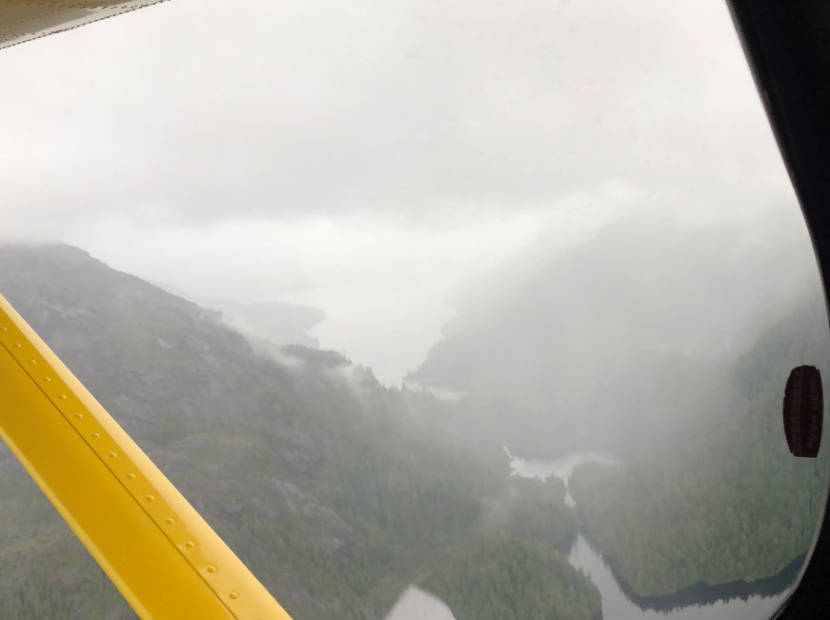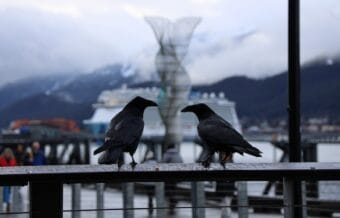
Federal safety investigators are calling for new, more restrictive regulations on flightseeing tours in the Ketchikan area after a series of crashes.
The National Transportation Safety Board says previous approaches focused on voluntary compliance have proven ineffective at addressing the unique hazards of flying in the area.
The agency’s 20-page report calls on the Federal Aviation Administration to impose specific regulations for Ketchikan air tours above and beyond what’s normally required.
The NTSB says it’s looking to prevent pilots being caught in clouds unexpectedly without the equipment necessary to navigate them. Large commercial airliners carry specialized instruments that allow them to fly in low-visibility conditions, but small flightseeing planes typically operate under so-called “visual flight rules” — that is, they rely on what pilots can see out the window.
The report highlights seven fatal flightseeing crashes in the Ketchikan area since 2007 that killed a total of 31 people and injured another 13. Three of those involved flying into poor weather conditions and crashing into terrain, including the most recent crash in Misty Fjords National Monument Wilderness last year. Those three crashes resulted in 20 deaths.
Current regulations on air tours require visibility of at least two miles when clouds are less than 1,000 feet above the ground. Pilots must also fly at least 500 feet above ground level.
But Ketchikan is more complex. NTSB Chair Jennifer Homendy said in a news release that the area’s fast-changing weather and mountainous terrain present “unique — but well-understood — safety hazards.”
The report asks the FAA to work with the National Weather Service to come up with more conservative weather standards for flightseeing tours in Ketchikan and require specialized training.
The board also asks the FAA to require air tour operators to comply with a 2009 agreement that standardizes tour routes, provides alternate flight paths on poor weather days, and encourages pilots to relay poor conditions. That agreement is voluntary — and even though the air carrier involved in last year’s crash had signed on, the pilot was not following the designated route at the time of the crash, according to the NTSB.
A ProPublica report last year highlighted that Alaska makes up a growing share of the country’s crashes involving small commercial aircraft. The NTSB says specific regulations issued for other high-risk locales, like the Grand Canyon and Hawaii, have improved flightseeing safety.
“Special federal aviation regulations have effectively reduced air-tour accidents in other areas, saving untold lives. We need the same safety leadership now — before there’s yet another tragedy in Ketchikan,” NTSB Chair Homendy said.
The NTSB investigates crashes, but it doesn’t have the power to issue binding rules. That’s why it’s calling for the FAA to impose new regulations.
In a statement, the FAA said it takes the safety board’s recommendations seriously and will respond “within an appropriate timeframe.”
The FAA said improving aviation safety in Alaska is one of the agency’s top priorities. The agency highlighted what it called a “sweeping examination of safety issues” in Alaska aviation conducted last year. That includes better weather data and forecasting, expanded satellite-based air traffic control coverage, improved navigation charts and new GPS-guided routes that allow pilots to fly at lower altitudes to avoid dangerous ice buildup.
The agency said it meets every spring with air tour operators to discuss lessons learned and recommendations and reminders ahead of the coming season.
But the NTSB says those actions fall short of what’s necessary to protect pilots and passengers.
One Ketchikan aviation heavyweight, Taquan Air, offered support for stricter regulations.
In a statement, Taquan executive Christa Hagan said the airline “supports the concept of a rulemaking process as a focused effort to enhance safety.” If the FAA decides to take action, Hagan said the airline would “welcome the opportunity to actively participate in the rulemaking process.”
Other Ketchikan flightseeing operators said they were reviewing the NTSB’s recommendations.



